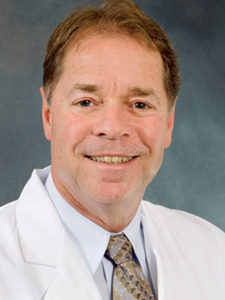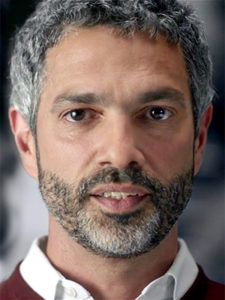
In recent years, great strides have been made in the treatment of psoriasis, allowing many patients to achieve remission. That level of progress, however, has not been met in the treatment of psoriatic arthritis, which has many researchers asking if the focus should move from treatment to prevention.
Three experts working on this question will share their insights at an ACR clinical practice session on Wednesday. The session, titled Psoriasis to Arthritis Transition: Mechanisms, Risk Factors & Interventional Strategies, will take place from 11:00 am – 12:30 pm in Room 375b.
The session will begin with a talk by Christopher T. Ritchlin, MD, MPH, Professor in the Department of Medicine, Allergy/Immunology and Rheumatology at the University of Rochester Medical Center, Rochester, NY. He will present “Mechanisms Underlying Development of Musculoskeletal Inflammation in Psoriasis.”
Dr. Ritchlin said several questions remain about what links, if any, exist between the inflammation in the skin and what sometimes happens in the joints. From a mechanistic point of view, there are several possibilities that he will outline in his lecture.
“Perhaps inflammation, which begins in the skin, moves to musculoskeletal structures such as tendons and joints in up to a third of patients with psoriasis,” he said. “That musculoskeletal involvement may be triggered by a ‘second hit,’ which could be trauma to a joint or infection or something else that causes the skin inflammation to widen and involve the joints.”
Another model could be similar to what is seen with such diseases as rheumatoid arthritis, where it’s thought the disease may begin in a mucosal surface such as the lung or the mouth, setting in motion a local autoimmune response that involves the joints secondarily. While possible, this model seems unlikely because current science hasn’t identified an auto-antigen in psoriasis or psoriatic arthritis, Dr. Ritchlin said.
Finally, he’ll explore a theory that patients with psoriatic arthritis lose their ability to suppress inflammation.
“Our bodies normally protect us from various inflammatory diseases,” Dr. Ritchlin said. “We have all these mechanisms of the immune system to suppress the inflammation of psoriasis and prevent it from involving other areas like the joints, but about a third of patients develop arthritis, so perhaps there’s a loss of these suppressive mechanisms.”

Next, Alexis Ogdie, MD, MSCE, Assistant Professor of Medicine at the Hospital of the University of Pennsylvania, Philadelphia, PA, will present “The Patient Journey From Psoriasis to Arthritis: Risk Factors, Clinical Features, and Costs.”
“This is an exciting time in light of the advances in psoriasis treatment,” Dr. Ogdie said. “We’re seeing complete clearance. We’re getting people to remission. But in psoriatic arthritis, we’re further behind. So now we’re thinking about the problem differently. Instead of focusing on treating the psoriatic arthritis, we’re asking if getting psoriasis patients to remission can prevent inflammatory arthritis. We’re flipping the question a bit—from thinking about remission to thinking about prevention, which is exciting.”
Dr. Ogdie will review the transition states and clinical characteristics seen during the transition from psoriasis to psoriatic arthritis.
“How can we use these characteristics to predict who will develop psoriatic arthritis?” she asks. “Research is improving our understanding of what may trigger psoriatic arthritis. In clinical practice, we think about comorbidities like obesity frequently, particularly as it relates to cardiovascular risk, physical function, and modulation of response to biologic therapy. But what if we think about it from a different direction? Obesity is one of the best established risk factors for PsA, so maybe this should be a discussion that happens with psoriasis patients and tested in this context.”

Finally, Jose U. Scher, MD, Director of the Psoriatic Arthritis Center at New York University Langone Orthopedic Hospital, New York, NY, will present “Interventional Strategies to Delay, Attenuate, or Prevent Arthritis in High-Risk Psoriasis Patients.”
Building on Dr. Ogdie’s lecture, Dr. Scher will review work his team and the preventing arthritis in at-risk psoriasis (PAMPA) study group have been doing to study pre-clinical psoriatic arthritis.
Dr. Scher, who also directs the NYU Microbiome Center for Rheumatology and Autoimmunity, said research is beginning to yield insights into what happens during the transition from psoriasis to psoriatic arthritis.
“We know some risk factors and predictors,” he said. “One of the most relevant ones for psoriasis patients is having a family member with psoriatic arthritis. If you have psoriasis and a first-degree family member with psoriatic arthritis, your risk for developing psoriatic arthritis increases 40-fold compared to psoriasis patients without a first degree relative with psoriatic arthritis.”
Dr. Scher will share data from a study of identical twins in Denmark that shows that while genetics are clearly a risk, other factors are also in play.
“In monozygotic identical twins with one twin having psoriatic arthritis, how many identical siblings will have psoriasis?” Dr. Scher asked. “The answer is about 50 percent of siblings will have skin involvement. The skin involvement is strongly genetically driven. If you ask the same question about psoriatic arthritis, about 10 percent to 11 percent of siblings will also have skin and joint involvement. So the genes are a risk factor for joint involvement, but there are clearly other non-genetic factors playing a role as well.”
